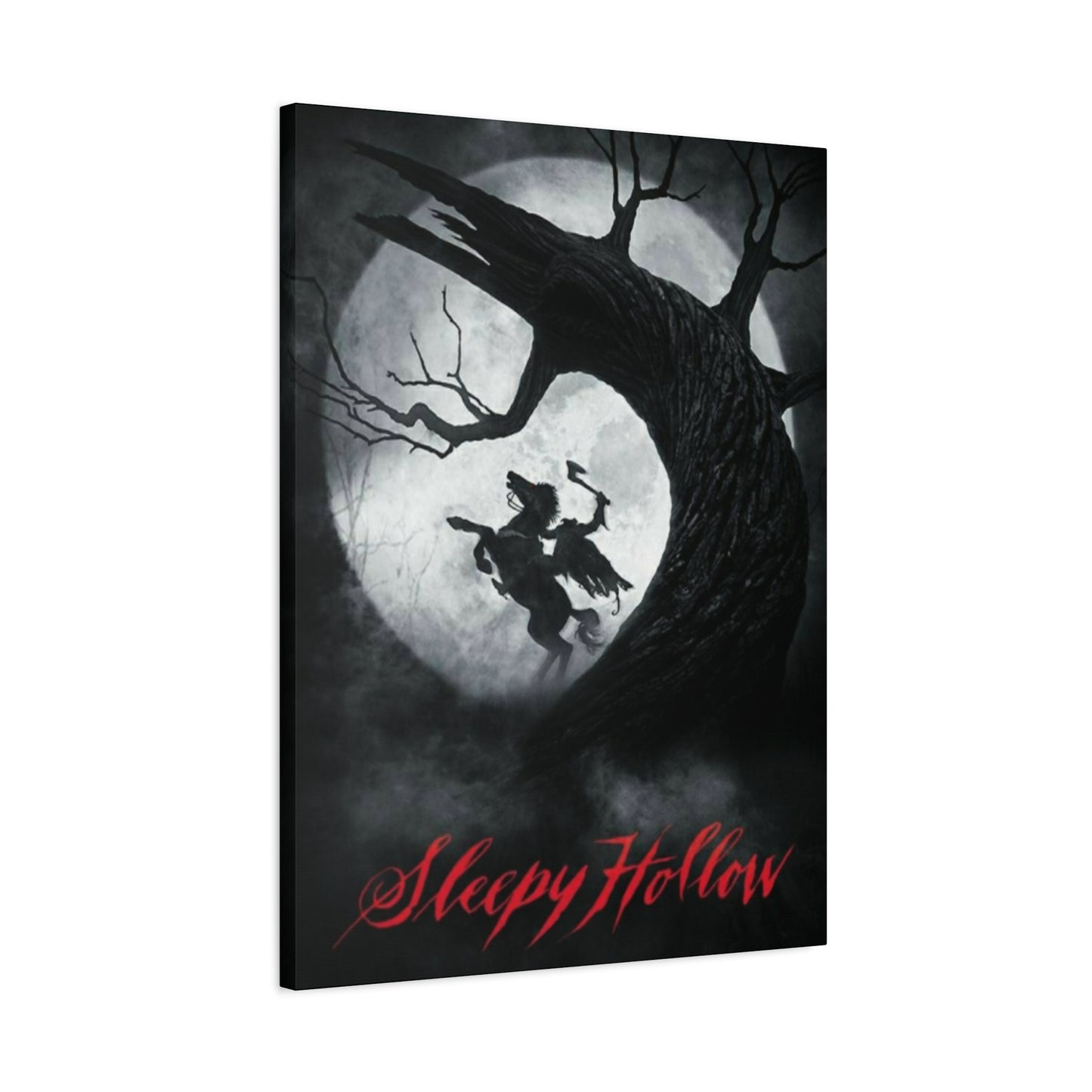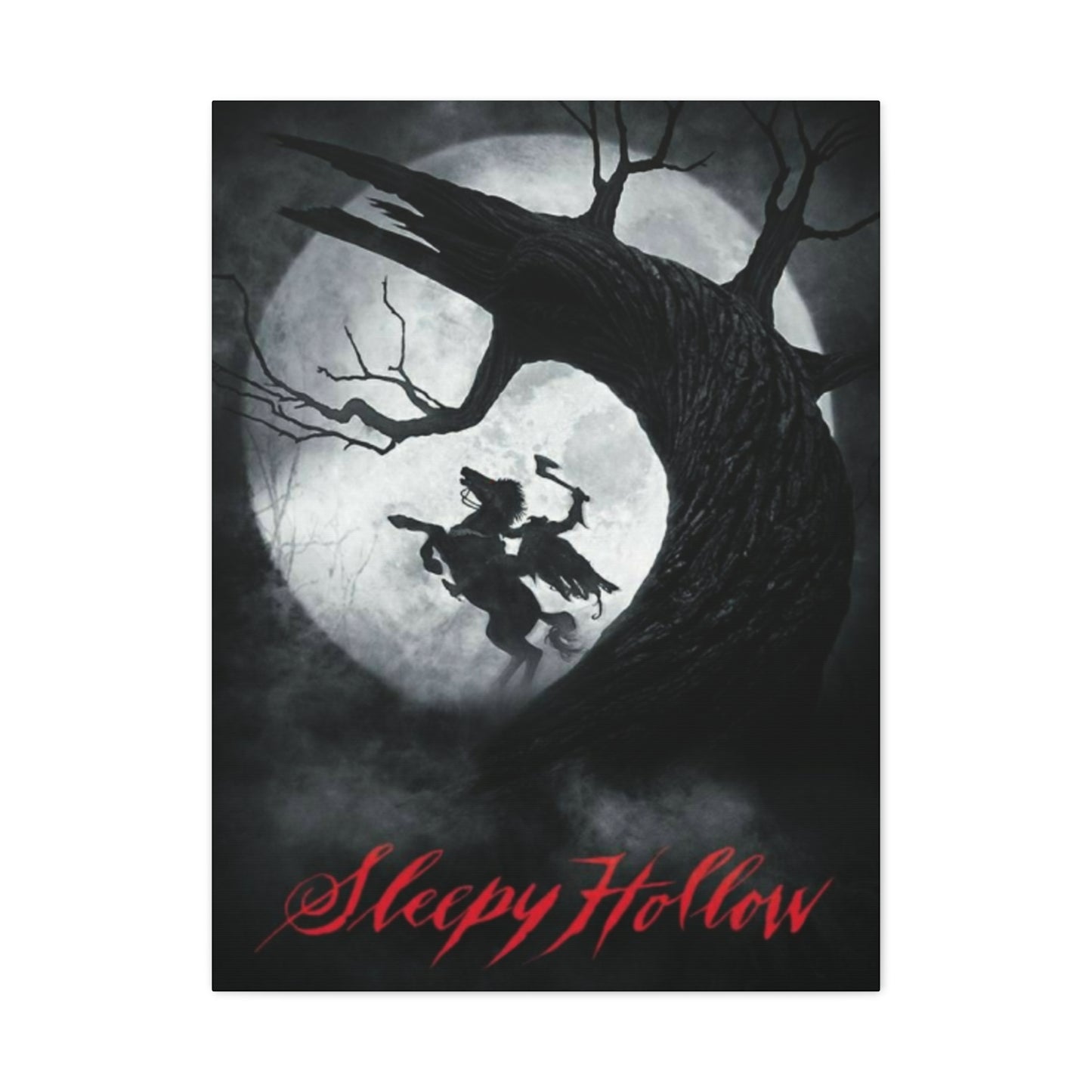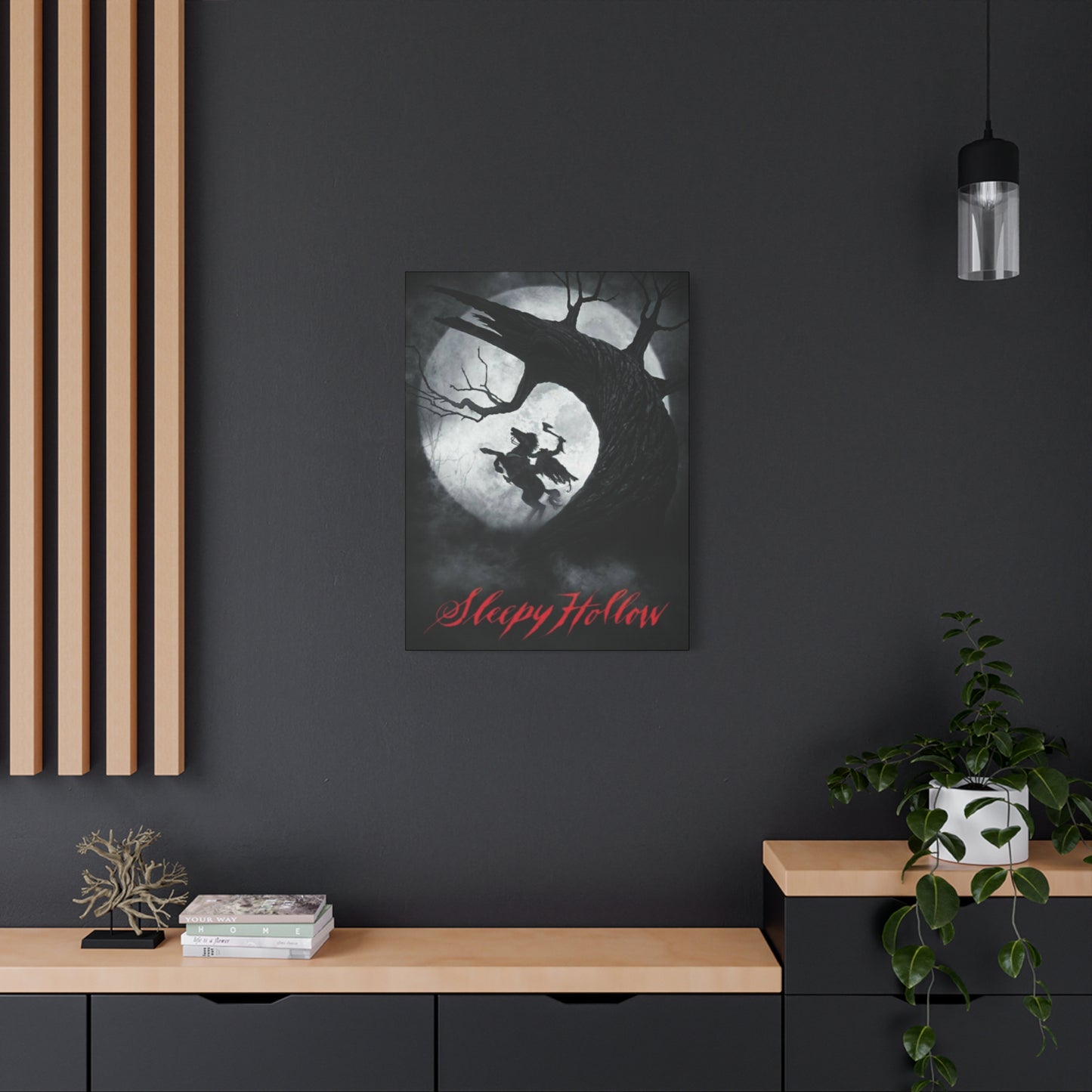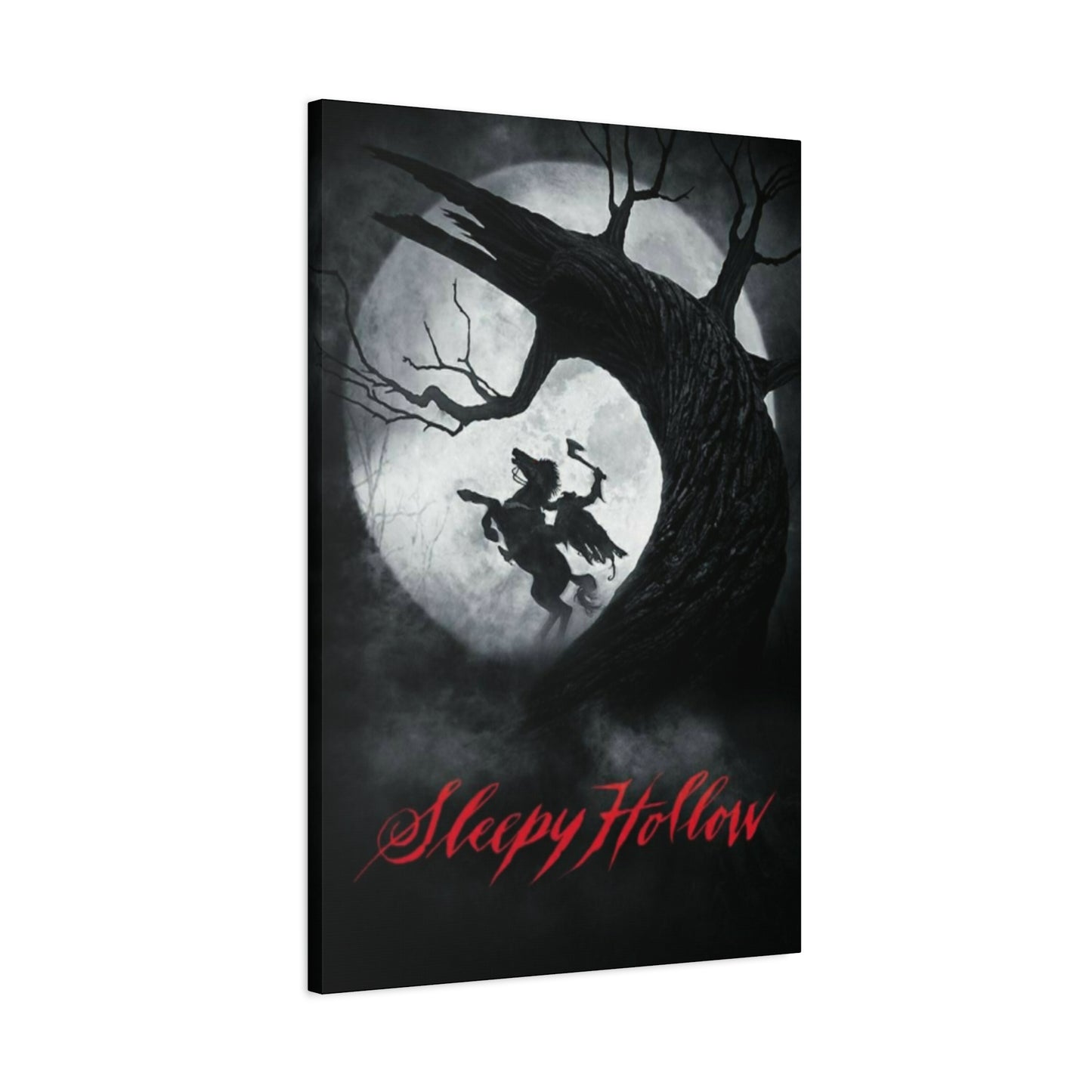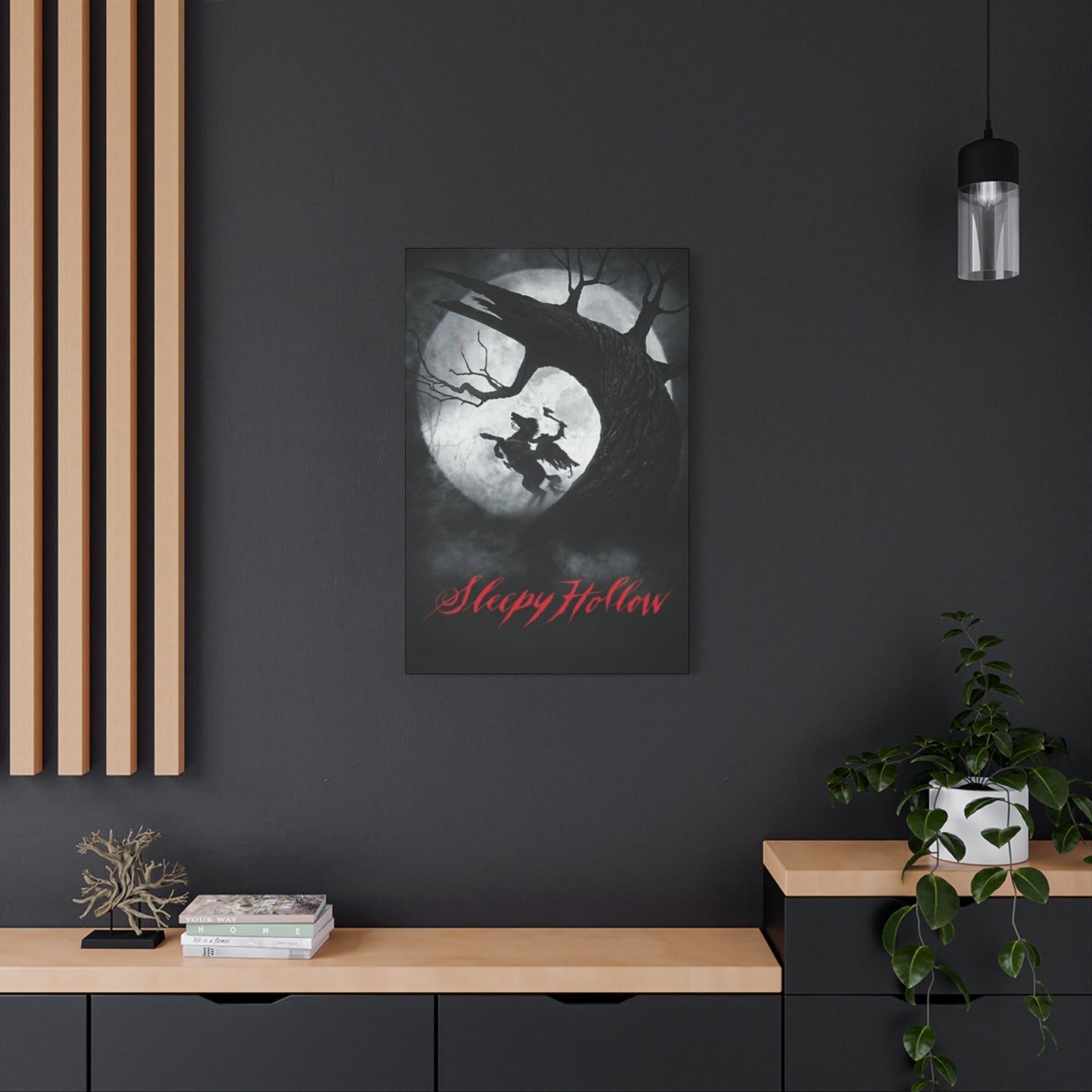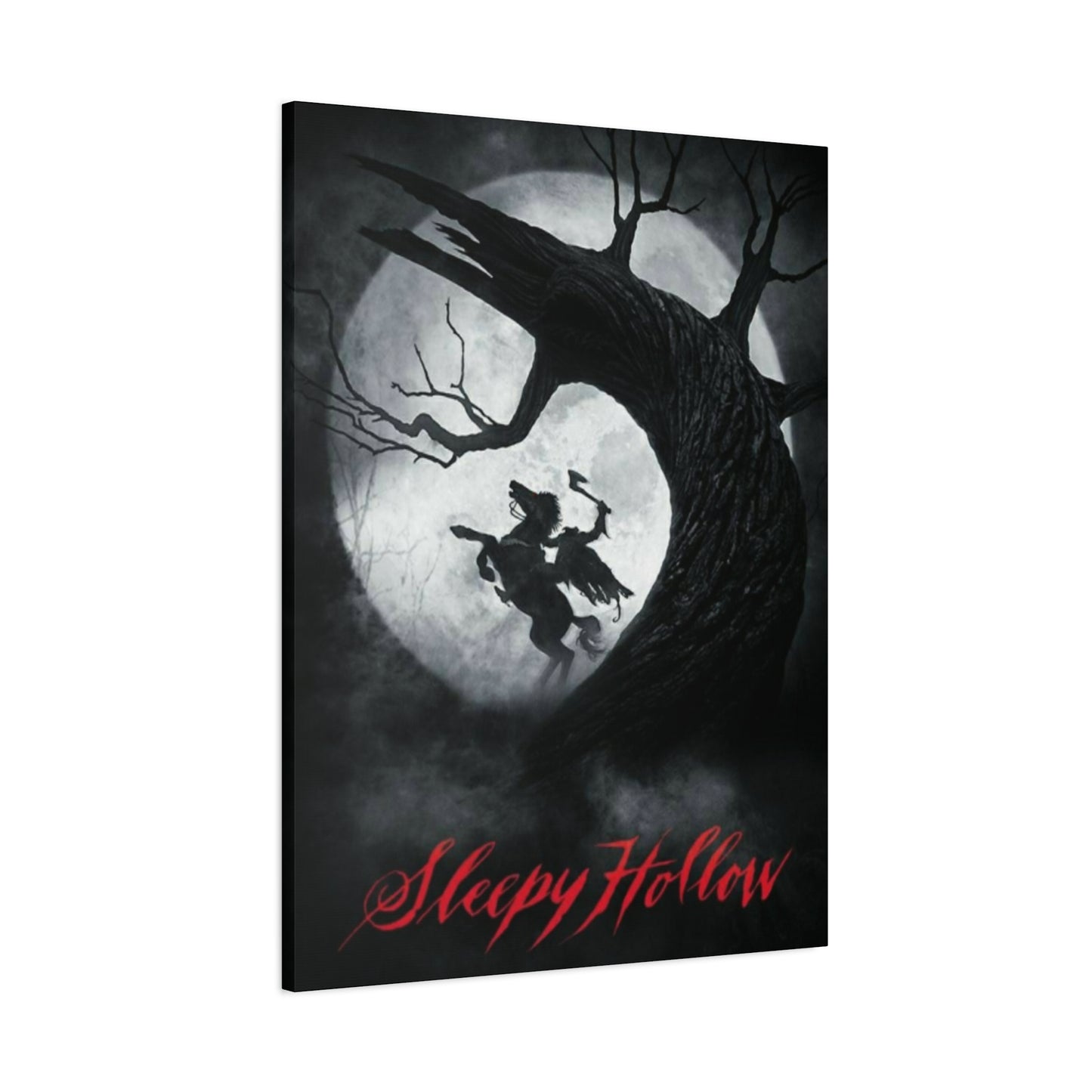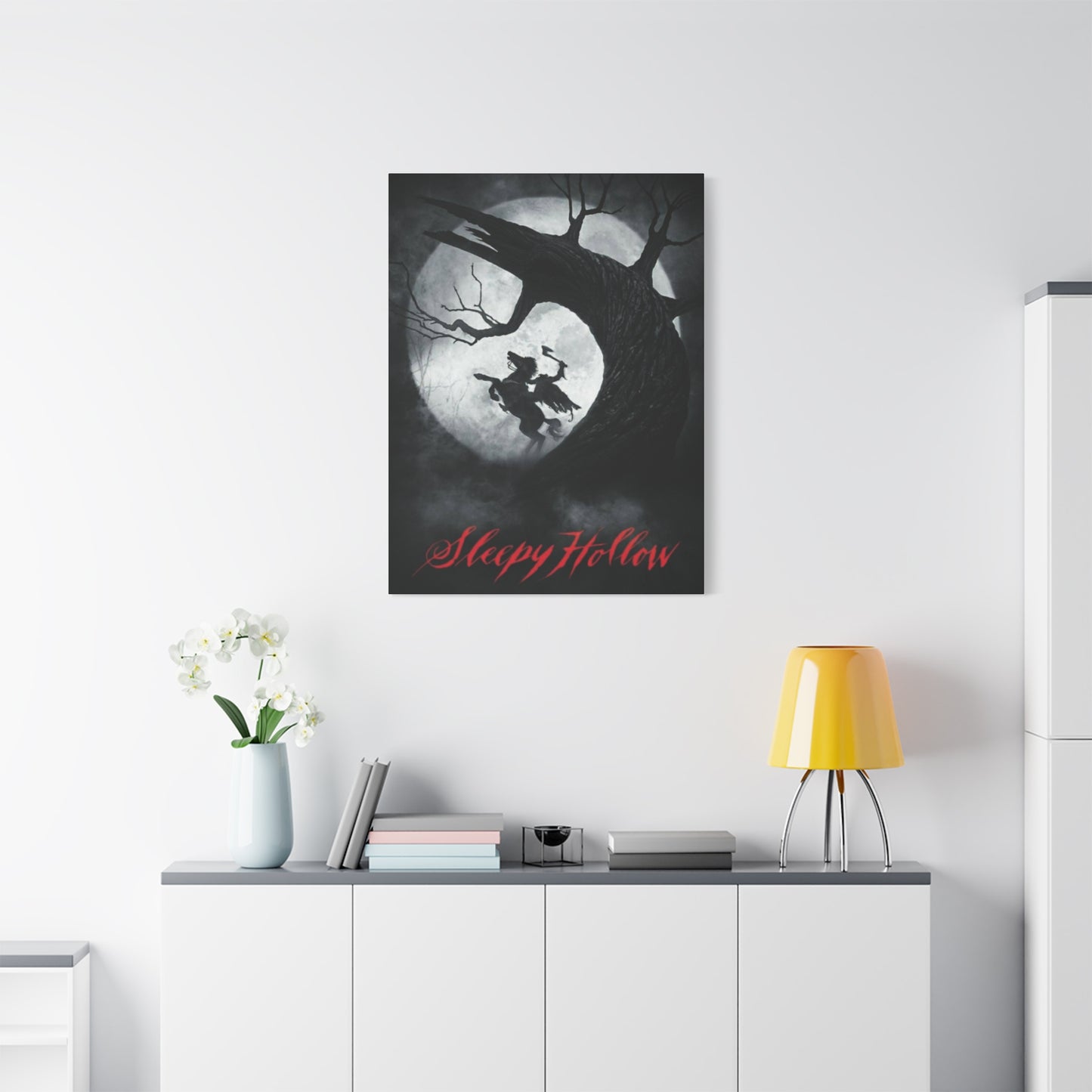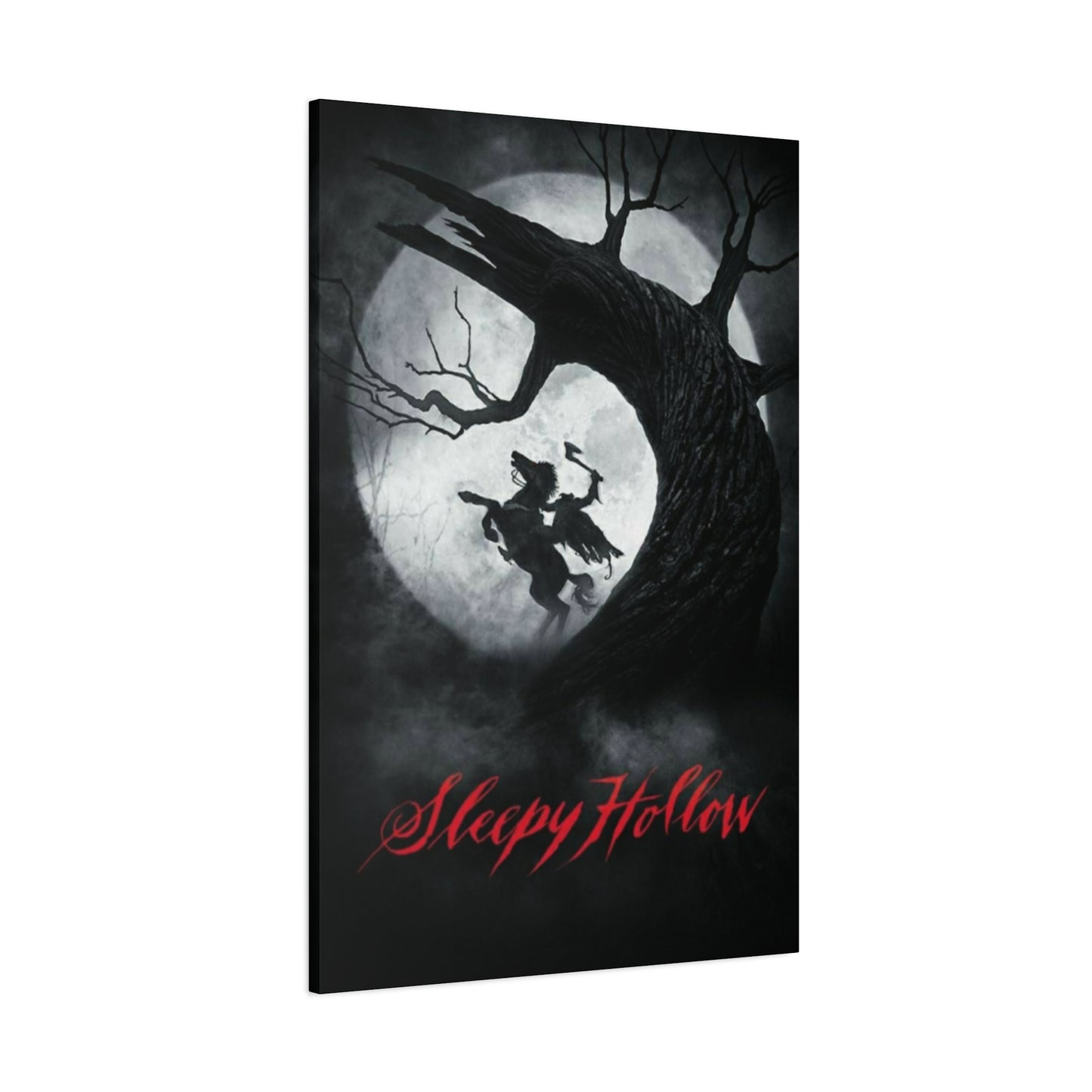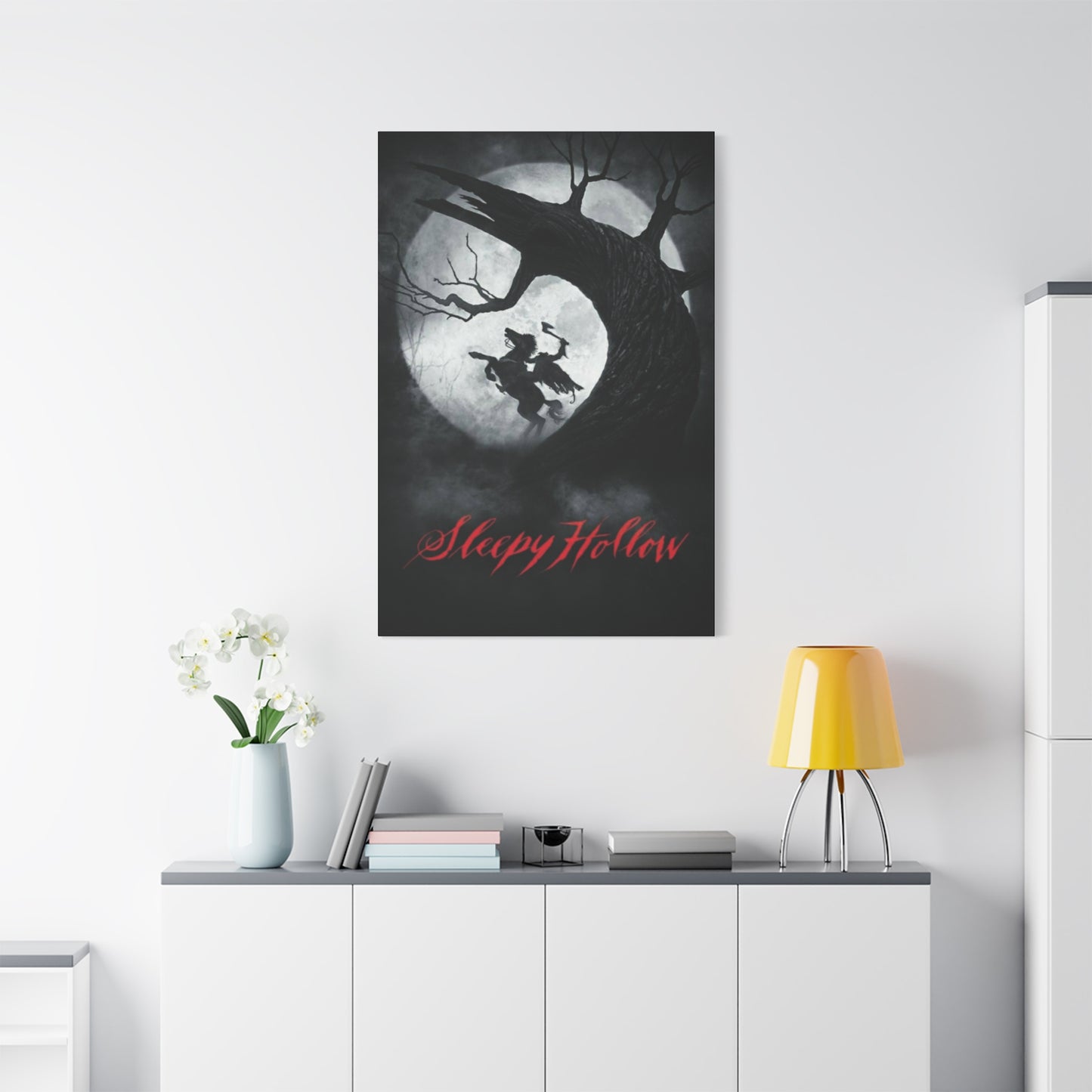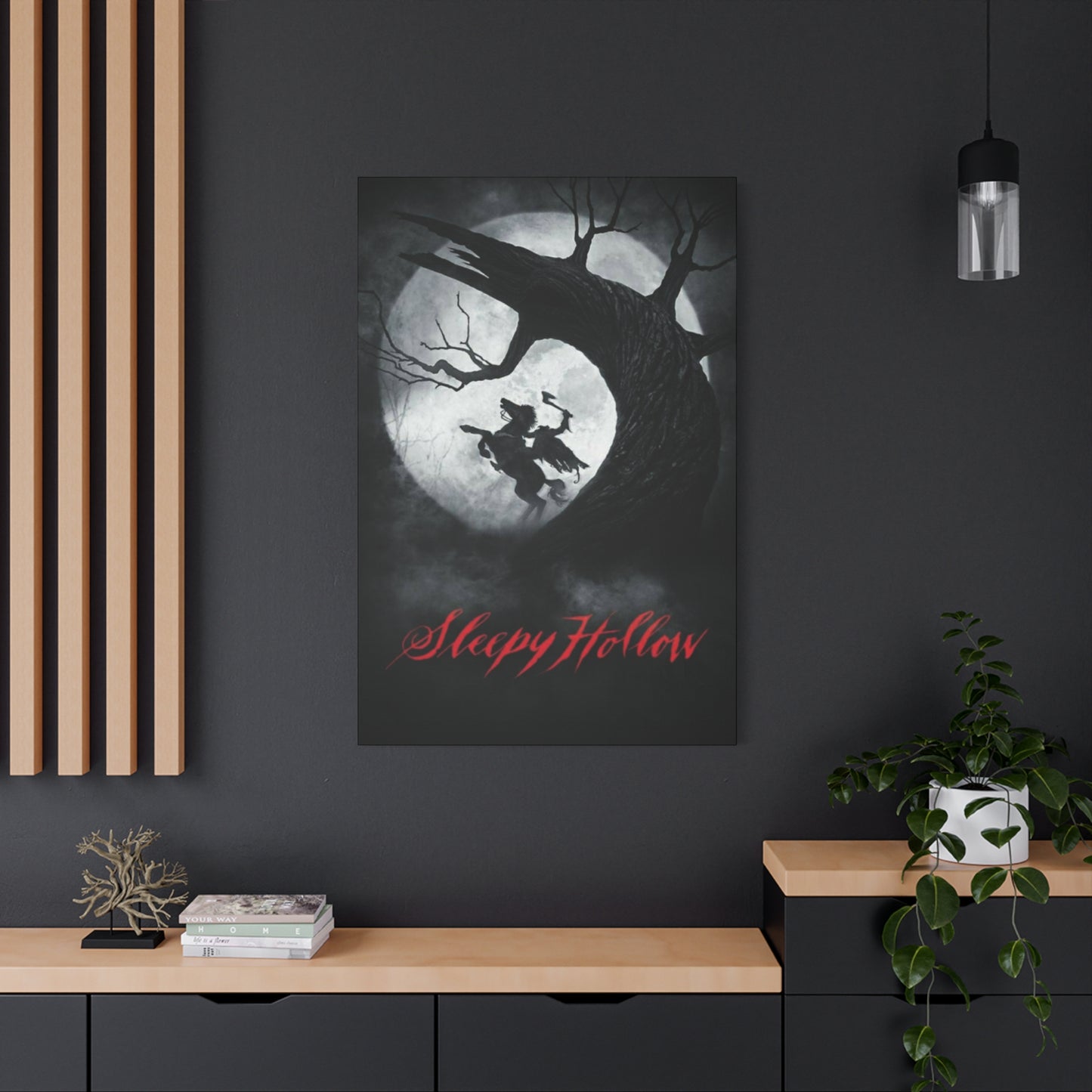Gothic Vibes Unleashed: A Complete Guide to Sleepy Hollow Movie Poster Wall Art
The timeless tale of the Headless Horseman has captivated audiences for centuries, and bringing this legendary story into your living space through carefully selected wall decorations creates an atmosphere of classic gothic horror that never goes out of style. The visual representation of this haunting narrative through printed canvas artwork offers enthusiasts a unique opportunity to celebrate one of the most iconic horror stories ever told. Whether you're a devoted fan of gothic literature, classic horror cinema, or simply appreciate the dark aesthetic beauty of supernatural tales, incorporating these visual elements into your interior design scheme can transform any room into a shrine dedicated to this legendary piece of folklore.
Understanding the Cultural Impact of Sleepy Hollow Artwork
The story of Ichabod Crane and his terrifying encounter with the supernatural has transcended generations, becoming deeply embedded in popular culture. This narrative, originally penned in the early nineteenth century, continues to inspire artists, filmmakers, and designers who seek to capture the essence of American gothic horror. The visual interpretations of this tale have evolved dramatically over the years, from early book illustrations to modern cinematic adaptations, each bringing a unique perspective to the legendary story. When you display artwork inspired by this narrative in your home, you're not just hanging a picture on your wall; you're participating in a cultural tradition that spans more than two centuries of artistic expression and storytelling.
The enduring appeal of this particular horror story lies in its perfect blend of folklore, supernatural terror, and atmospheric tension. Artists who create interpretations of these scenes understand the delicate balance required to capture the eerie mood of the original tale while making it visually compelling for contemporary audiences. The misty landscapes, the autumn settings, the tension between rational skepticism and supernatural belief all these elements combine to create imagery that resonates with viewers on a primal level. The visual language of this story speaks to our deepest fears about the unknown, about darkness, and about the thin veil that separates the living world from whatever lies beyond.
Throughout history, different artistic movements have approached this subject matter with varying styles and techniques. From romantic illustrations that emphasized the pastoral beauty of the Hudson Valley setting to expressionist interpretations that highlighted the psychological horror of the tale, each era has left its mark on how we visualize this story. Contemporary artists continue this tradition, bringing modern sensibilities and techniques to bear on these classic themes. The result is a rich tapestry of visual interpretations that allows collectors and enthusiasts to find pieces that speak to their personal aesthetic preferences while honoring the spirit of the original narrative.
The Artistic Evolution of Horror Movie Representations
Cinema brought an entirely new dimension to how audiences experienced this legendary tale. The transition from page to screen required filmmakers and production designers to make countless creative decisions about how to visualize scenes that had previously existed only in the imagination of readers. These cinematic interpretations have, in turn, influenced how contemporary artists approach creating wall decorations based on this narrative. The color palettes, the composition choices, the visual motifs all of these elements from film have become part of the visual vocabulary associated with this story.
The gothic aesthetic that dominates much of the artwork inspired by this tale draws heavily from both literary traditions and cinematic history. The use of muted colors, dramatic shadows, and atmospheric effects creates a sense of unease that perfectly captures the mood of the original story. Artists working in this style understand that effective horror imagery doesn't always rely on explicit violence or gore; instead, the most powerful pieces often suggest danger and supernatural presence through subtlety and implication. The bare branches of autumn trees silhouetted against a full moon, the suggestion of movement in the shadows, the isolated figure of a lone traveler on a dark road these visual elements tap into universal fears and create lasting impressions on viewers.
Modern printing technologies have revolutionized how these artistic interpretations can be brought into homes. High quality reproduction methods ensure that even the most subtle gradations of shadow and light are preserved, allowing the emotional impact of the original artwork to translate effectively to wall decorations. The texture of canvas adds another dimension to these pieces, creating a tactile quality that enhances the viewing experience and gives the artwork a presence that flat paper prints simply cannot match. This combination of artistic vision, cultural significance, and modern production techniques results in wall decorations that are both aesthetically pleasing and culturally meaningful.
Choosing the Perfect Size for Your Display Space
Determining the appropriate dimensions for your wall decoration requires careful consideration of multiple factors. The size of the room, the height of the ceilings, the amount of available wall space, and the viewing distance all play crucial roles in selecting pieces that will have maximum visual impact without overwhelming the space. A common mistake when decorating with thematic artwork is choosing pieces that are either too small to make a statement or too large for the proportions of the room. Understanding the principles of spatial relationships and visual balance will help you make choices that enhance your living environment rather than detract from it.
For living rooms and primary entertainment spaces, larger format pieces typically work best. These substantial artworks can serve as focal points around which you arrange furniture and other decorative elements. A generously sized canvas measuring four feet or more in width can anchor a seating area, draw the eye, and establish the aesthetic tone for the entire room. When positioned above a sofa or fireplace mantel, these commanding pieces create a sense of drama and importance that smaller works cannot achieve. The scale of these larger pieces also allows for greater detail and complexity in the imagery, enabling viewers to discover new elements each time they look at the artwork.
Bedroom spaces often benefit from slightly smaller, more intimate pieces that create atmosphere without dominating the personal space. Artwork positioned above the headboard or on the wall opposite the bed should be large enough to be clearly visible but not so overwhelming that it prevents relaxation. The goal in sleeping quarters is to create an ambiance that reflects your interests while maintaining a sense of calm. Medium sized pieces, typically ranging from two to three feet in width, often hit this sweet spot perfectly, providing visual interest without creating an overpowering presence in a room meant for rest and relaxation.
Hallways, staircases, and transitional spaces present unique opportunities for displaying collections of smaller pieces or creating gallery style arrangements. These areas allow you to showcase multiple related artworks, building a narrative through sequential viewing as people move through your home. Smaller individual pieces, perhaps eighteen to twenty four inches in dimension, can be arranged in thoughtful groupings that tell a story or explore different aspects of the same theme. This approach works particularly well for those who want to celebrate multiple interpretations or scenes from the legendary tale, creating an immersive experience as visitors navigate through your space.
Material Quality and Canvas Construction Details
The foundation of any durable wall decoration lies in the quality of materials used in its construction. Canvas artwork designed for long term display should utilize premium grade cotton or polyester blends that resist sagging, fading, and environmental damage over time. The weave density of the fabric affects both the appearance of the printed image and the structural integrity of the finished piece. Higher thread counts generally produce smoother surfaces that capture fine details more accurately, while also providing greater durability against the stresses of mounting and environmental factors.
The stretching and mounting process significantly impacts the final appearance and longevity of canvas artwork. Professional grade pieces feature canvas stretched tightly over solid wooden frames, typically constructed from kiln dried pine or similar stable woods. The stretching should be uniform across the entire surface, creating consistent tension that prevents warping or sagging over time. Gallery wrap techniques, where the image extends around the edges of the frame, create a finished appearance that doesn't require additional framing, though traditional methods that leave space for decorative frames remain popular for those seeking a more classic presentation style.
Printing technology plays a crucial role in determining the final quality of the artwork. Advanced giclée printing processes using archival quality inks ensure that colors remain vibrant and true for decades under normal viewing conditions. These professional printing methods can reproduce an enormous range of colors and tonal values, capturing subtle gradations that bring depth and dimension to the artwork. UV resistant inks protect against the fading that can occur with prolonged exposure to sunlight, though it's still advisable to avoid placing valuable artwork in locations where it receives direct, intense sunlight for extended periods each day.
Protective coatings applied to finished canvas prints serve multiple purposes. These clear layers shield the printed surface from dust, moisture, and minor physical contact while also enhancing the visual depth of the colors. Matte finishes reduce glare and create a sophisticated appearance that works well in virtually any lighting condition, while semi gloss coatings can add richness to colors and create subtle visual interest through their interaction with ambient light. The choice between these finishing options often comes down to personal preference and the specific lighting conditions in the intended display location.
Color Schemes That Enhance Gothic Atmosphere
The palette choices in horror themed artwork significantly influence the emotional response viewers experience. Traditional gothic color schemes rely heavily on deep, rich tones that evoke mystery, elegance, and a touch of melancholy. Midnight blues, forest greens, burgundy reds, and charcoal grays form the backbone of this aesthetic, creating visual harmony with the supernatural themes while maintaining sophisticated appeal. These colors work together to establish an atmosphere that feels both timeless and subtly unsettling, perfectly capturing the essence of classic horror narratives.
Autumnal palettes particularly resonate with this specific story, given its traditional setting during the harvest season. Burnt oranges, golden yellows, russet browns, and deep reds evoke the beauty of fall foliage while also suggesting decay and the approach of winter's death. These warm earth tones create visual richness and complexity, allowing artists to build layers of meaning into their compositions. The contrast between the warm colors of autumn leaves and the cool tones of gathering storm clouds or moonlit skies creates dynamic visual tension that draws the eye and holds attention.
Monochromatic schemes in shades of gray can produce strikingly dramatic effects, particularly when combined with strategic use of pure black and bright highlights. This approach emphasizes form, shadow, and texture while stripping away the potential distractions of color. The resulting images feel timeless and classic, evoking the aesthetics of early photography and vintage cinema. For enthusiasts who prefer subtlety in their decor or who need artwork that coordinates with a wide range of existing color schemes, these neutral palette options offer versatility without sacrificing atmospheric impact.
Contemporary interpretations sometimes incorporate unexpected color choices that bring fresh energy to familiar imagery. Acid greens, electric blues, or deep purples can inject a modern sensibility into classic scenes while maintaining the essential mood and theme. These bolder color choices appeal to collectors who appreciate the traditional subject matter but want their decor to reflect more contemporary aesthetic sensibilities. The key to successfully implementing these modern palettes lies in maintaining the tonal relationships and compositional balance that give the artwork its emotional resonance, even when the specific hues depart from historical precedents.
Composition Techniques in Effective Horror Imagery
The arrangement of visual elements within the frame dramatically affects how viewers experience and interpret the artwork. Classic horror compositions often employ techniques designed to create tension, guide the eye, and suggest narrative beyond what's explicitly shown. Leading lines that draw attention toward mysterious destinations, asymmetrical arrangements that create visual unease, and strategic use of negative space that suggests lurking presences all these compositional tools help artists craft images that tell stories and evoke emotional responses.
Foreground, middle ground, and background elements work together to create depth and atmosphere in successful horror artwork. A winding path in the foreground might lead the eye back toward a distant building or bridge, creating a sense of journey and destination while also establishing scale and spatial relationships. Twisted trees or overhanging branches in the middle ground frame the scene and add vertical interest, while distant hills or storm clouds in the background establish context and mood. This layering of visual information creates complexity that rewards repeated viewing and gives the artwork staying power in your living space.
The placement of the primary subject within the frame carries significant meaning in visual storytelling. Central positioning creates stability and forces direct confrontation with the subject, while off center placement can generate dynamic energy and imply movement or directionality. In horror themed artwork, isolating a figure against vast, empty spaces can emphasize vulnerability and loneliness, enhancing the sense of danger and supernatural threat. Conversely, crowding the frame with densely packed visual information can create feelings of claustrophobia or overwhelming complexity that mirror the psychological state of characters within the narrative.
Lighting and shadow patterns form perhaps the most crucial compositional element in horror imagery. The interplay between illuminated areas and deep shadows creates dramatic contrast that draws attention and shapes the viewer's emotional response. Moonlight breaking through storm clouds, the warm glow of a lantern against surrounding darkness, or the harsh illumination of lightning revealing something momentarily glimpsed these lighting scenarios create visual drama and reinforce the supernatural themes at the heart of the artwork. Artists who master the manipulation of light and shadow can guide viewers through the composition, highlighting important elements while allowing others to recede into mysterious obscurity.
Integrating Horror Decor Into Modern Interiors
Successfully incorporating gothic and horror themed elements into contemporary living spaces requires balancing the dark aesthetic with other design principles. The key lies in treating these pieces as serious artistic statements rather than novelty items, selecting works with genuine artistic merit and displaying them with the same care you would give to any valued artwork. When approached thoughtfully, horror themed decor adds character, sophistication, and personal expression to modern interiors without creating spaces that feel theatrical or one dimensional.
Living rooms benefit from using horror themed artwork as accent pieces within a broader decorative scheme. Pairing these darker elements with lighter, more neutral furnishings creates visual balance and prevents the space from feeling oppressive. A dramatic piece depicting a moonlit chase scene might serve as the focal point above a light colored sofa, with throw pillows and decorative objects picking up accent colors from the artwork to create cohesion. This approach allows you to celebrate your interests while maintaining a space that feels welcoming and livable for everyday use.
Home offices and personal libraries represent ideal locations for more extensive collections of horror themed artwork. These spaces already encourage contemplation and individual expression, making them perfect environments for displays that reflect specific interests and passions. Surrounding yourself with imagery that inspires and engages you while you work can actually enhance productivity and creative thinking. The key is creating arrangements that feel intentional and curated rather than cluttered, with each piece given adequate space to breathe and command attention on its own merits.
Entertainment rooms, home theaters, and game spaces embrace darker aesthetics more readily than other areas of the home. In these locations, you can be bolder with your choices, creating immersive environments that enhance the experience of watching horror films or reading gothic literature. Floor to ceiling arrangements, multiple large scale pieces, and dramatic lighting schemes all become appropriate in spaces specifically designed for entertainment and escape from everyday concerns. These rooms offer opportunities to fully indulge your passion for horror aesthetics without worrying about maintaining balance with other decorating goals.
The Psychology Behind Horror Themed Decoration
Understanding why people are drawn to horror imagery in their personal spaces reveals fascinating insights into human psychology and the role of art in our lives. For many enthusiasts, surrounding themselves with representations of fears and dangers in controlled, artistic forms provides a way to process and manage anxiety. The artwork serves as a kind of exposure therapy, allowing us to confront frightening concepts in settings where we feel completely safe. This paradox of seeking out fear producing imagery for our most intimate spaces speaks to the complex relationship humans have with danger, uncertainty, and the unknown.
Horror themed decor also functions as a form of identity expression and community signaling. Displaying these pieces in your home communicates something about your interests, your aesthetic preferences, and your intellectual engagements to visitors. It identifies you as someone who appreciates classic literature, values artistic interpretation of cultural narratives, or enjoys the aesthetic qualities of gothic and romantic art movements. This social signaling helps like minded individuals recognize each other and can serve as a conversation starter that leads to deeper connections based on shared interests.
The aesthetic pleasure derived from horror imagery relates to what philosophers and psychologists call the sublime the experience of confronting something simultaneously beautiful and terrifying. Gothic and horror artwork often depicts scenes of natural power, supernatural forces, or psychological extremes that produce this mixed emotional response. We're simultaneously attracted to the artistic beauty of the composition and repelled by the frightening subject matter, creating a cognitive tension that many people find intellectually and emotionally stimulating. This engagement with complex emotional states through art enriches our inner lives and provides experiences that purely decorative artwork cannot offer.
From a design psychology perspective, darker color palettes and mysterious imagery can actually create intimate, cozy atmospheres when used appropriately. While bright, light spaces feel open and public, rooms decorated with deeper tones and more mysterious artwork take on a protected, private quality that many people find comforting. The spaces become refuges from the outside world, personal sanctuaries where you can be completely yourself. This transformation of your living environment into a true reflection of your inner life represents one of the most rewarding aspects of thoughtful interior decoration.
Historical Accuracy Versus Artistic Interpretation
Artists creating work inspired by this legendary tale must navigate the balance between historical accuracy and creative expression. The original story provides certain canonical details about settings, characters, and events, but leaves enormous room for interpretation in visual representation. Different artists emphasize different aspects of the narrative, from the romantic and picturesque elements of the Hudson Valley landscape to the purely horrific moments of supernatural encounter. Understanding these different approaches helps collectors choose pieces that align with their personal vision of the story.
Period accurate depictions attempt to represent the world of the late eighteenth century Hudson Valley with historical fidelity. These pieces incorporate accurate architectural details, period appropriate clothing, and authentic representations of the landscape as it existed during the era in which the story is set. For history enthusiasts and purists, these carefully researched interpretations offer windows into the past, allowing viewers to immerse themselves in the world as it actually existed. The attention to detail in these works demonstrates serious artistic commitment and scholarly engagement with the source material.
Romantically enhanced versions take creative liberties with historical details to emphasize the aesthetic and emotional dimensions of the narrative. These pieces might feature exaggerated atmospheric effects, more dramatic landscapes, or stylized representations of characters and settings that prioritize visual impact over documentary accuracy. This approach aligns with the romantic literary tradition from which the original story emerged, embracing heightened emotions and theatrical presentations that make the artwork more visually striking and emotionally engaging. For many collectors, these interpretations capture the spirit of the story more effectively than literal representations ever could.
Contemporary reimaginings transport the essential elements of the tale into modern contexts or apply current artistic sensibilities to the traditional narrative. These works might incorporate abstract elements, use contemporary color palettes, or integrate modern design principles while maintaining recognizable references to the source material. This approach keeps the legend relevant and accessible to new generations while demonstrating the timeless nature of its core themes. The tension between tradition and innovation in these pieces reflects broader conversations in the art world about the relationship between past and present, between preservation and evolution.
Creating Gallery Walls and Multiple Piece Displays
Arranging multiple pieces of related artwork creates opportunities for visual storytelling and thematic exploration that single pieces cannot achieve. Gallery walls dedicated to this particular narrative can trace the story's progression, explore different artistic interpretations, or simply create an immersive environment that celebrates the tale from multiple angles. Planning these arrangements requires consideration of visual balance, color harmony, and narrative flow to ensure the final result feels cohesive rather than chaotic.
Symmetrical arrangements produce formal, traditional appearances that work well in classic interior designs. These layouts typically feature a central, larger piece flanked by smaller coordinating works in balanced positions. The symmetry creates a sense of order and intentionality that communicates careful curation and sophisticated taste. This approach works particularly well in spaces with traditional architectural features like fireplaces or built in bookcases, where the gallery wall can echo the formal balance of the room's structural elements.
Asymmetrical layouts offer more dynamic energy and contemporary appeal, allowing for greater variety in piece sizes and creating visual interest through deliberate imbalance. These arrangements require more planning to achieve successful results, as the lack of formal symmetry means you must carefully consider how the visual weight of each piece relates to the others. Color, size, and compositional complexity all affect perceived weight, and balancing these factors while maintaining an asymmetrical arrangement challenges your design skills but produces more visually engaging results when done successfully.
Salon style hanging, where pieces of various sizes cover an entire wall in a dense arrangement, creates dramatic impact and allows you to display extensive collections. This approach originated in nineteenth century art exhibitions and brings that same sense of abundance and visual richness to residential spaces. The key to successful salon hanging lies in maintaining consistent spacing between pieces, typically two to three inches, regardless of the sizes involved. This consistent negative space provides visual breathing room that prevents the arrangement from feeling cluttered despite the density of artwork.
Lighting Techniques to Enhance Visual Impact
Proper illumination transforms wall art from mere decoration into compelling focal points that command attention and reveal subtle details. Horror themed artwork with its emphasis on shadows, atmospheric effects, and tonal complexity demands particularly thoughtful lighting approaches. The goal is to enhance the artwork's inherent qualities while creating ambiance that complements both the pieces themselves and the overall room design. Understanding different lighting techniques and their effects allows you to make informed choices that maximize the visual impact of your collection.
Direct accent lighting using adjustable picture lights or track mounted spots allows precise control over how artwork is illuminated. These dedicated light sources can be positioned to eliminate glare while ensuring even illumination across the entire surface of the piece. The directed nature of this lighting creates a spotlight effect that emphasizes the artwork's importance in the room and draws immediate attention to it. Adjustable intensity and beam width give you control over how dramatic this effect becomes, allowing you to fine tune the presentation to match your preferences and the viewing conditions in the space.
Ambient lighting approaches integrate artwork illumination into the overall room lighting scheme, creating more subtle effects that allow the pieces to exist as harmonious elements within the space rather than as isolated focal points. Recessed ceiling lights, wall sconces, and floor lamps positioned thoughtfully can provide adequate illumination for viewing artwork while maintaining atmospheric mood lighting throughout the room. This approach works particularly well in living spaces where you want the artwork to contribute to the overall ambiance without dominating attention at all times.
Natural lighting considerations become crucial when positioning artwork in rooms with windows. While natural light creates beautiful viewing conditions during daylight hours, prolonged direct sunlight exposure can damage canvas and fade inks over time. Positioning pieces on walls perpendicular to windows rather than opposite them provides good viewing light without excessive direct exposure. UV filtering window treatments offer additional protection while still allowing natural light into the space. For particularly valuable pieces or those in rooms with intense sun exposure, choosing walls that receive only indirect natural light provides the best long term protection.
Dramatic shadow effects created through strategic lighting choices can enhance the mood of horror themed artwork. Placing light sources at angles that create shadows around and behind frames adds dimensional depth and subtle drama to the display. Uplighting from floor mounted fixtures or downlighting from above creates elongated shadows that echo the mysterious atmospheres within the artwork itself. These techniques work particularly well in dedicated entertainment spaces or rooms where creating a specific ambiance takes priority over bright, even illumination.
Protecting Your Investment Over Time
Canvas artwork requires ongoing care and attention to maintain its appearance and structural integrity over years of display. Understanding potential threats and implementing protective measures ensures your collection remains in excellent condition, preserving both its aesthetic appeal and any future resale value. While canvas prints prove more durable than paper based artwork, they still require respect and proper treatment to achieve their full lifespan potential.
Environmental control represents the first line of defense in artwork preservation. Maintaining stable temperature and humidity levels prevents canvas expansion and contraction that can lead to loosening of the material on its frame or cracking of printed surfaces. Ideal conditions typically fall between sixty five and seventy five degrees Fahrenheit with relative humidity between forty and fifty percent. Avoiding placement near heating vents, air conditioning outlets, fireplaces, or other sources of temperature fluctuation helps maintain these stable conditions. In climates with extreme seasonal variations, paying attention to these factors becomes particularly important.
Regular maintenance involves simple practices that prevent dirt accumulation and minor damage. Dusting artwork with soft, dry microfiber cloths or using a soft brush attachment on a vacuum cleaner keeps surfaces clean without applying pressure that could damage the canvas. Avoid using any liquid cleaners or touching the printed surface with bare hands, as oils from skin can transfer to the canvas and potentially affect the print over time. Annual inspections of the mounting hardware ensure that everything remains secure and that the canvas maintains proper tension on its frame.
Professional conservation services become necessary when artwork suffers damage or shows signs of deterioration beyond normal aging. Canvas tears, significant fading, water damage, or structural problems with the frame require expert attention to repair properly. While the cost of professional conservation may seem significant, it's often far less than replacing damaged pieces, particularly for limited edition works or pieces with sentimental value. Building relationships with reputable art conservators in your area provides resources when serious issues arise with valuable pieces in your collection.
Documentation of your collection serves both insurance purposes and personal records. Photographing each piece from multiple angles, maintaining purchase records with pricing information, and noting any edition numbers or artist signatures creates a comprehensive archive of your holdings. This information becomes invaluable if you need to file insurance claims after damage or theft, and it also helps you track the growth of your collection over time. Digital storage of these records with cloud backup ensures you won't lose this important documentation even if physical copies are damaged or destroyed.
Framing Options and Display Alternatives
While many canvas pieces come ready to hang with gallery wrapped edges, additional framing options allow for customization that better suits specific aesthetic preferences or interior design schemes. Traditional frames provide opportunities to introduce complementary colors, textures, and styles that enhance both the artwork and the surrounding decor. Understanding available framing options expands your ability to create presentations that perfectly match your vision for how the pieces should appear in your space.
Wood frames in dark finishes complement gothic and horror themed artwork particularly well. Rich mahogany, deep walnut, or painted black frames provide substantial presence that matches the visual weight of dramatic imagery without competing for attention. The natural texture of wood adds warmth that balances the cooler tones often found in these pieces, creating pleasing contrast. Simple, clean lined frame profiles maintain focus on the artwork itself, while more ornate moldings with carved details can reinforce period aesthetics for historically inspired pieces.
Metal frames in bronze, copper, or black finishes offer sleek, contemporary alternatives that work beautifully with both traditional and modern interpretations of horror themes. The reflective qualities of metal create subtle visual interest as viewing angles change, adding dynamic elements to static artwork. Thin metal frames provide minimal visual intrusion, creating floating effects that work particularly well for modern pieces where you want to emphasize the artwork rather than its presentation. Wider metal frames make bolder statements and can better bridge visual gaps in gallery wall arrangements.
Ornate antique or reproduction frames transport artwork into more historical contexts, creating presentations that feel like museum pieces or treasured heirlooms. Gilded finishes, elaborate carved details, and traditional molding profiles all contribute to creating presentations that feel substantial and important. This approach works especially well for pieces that take inspiration from older artistic traditions or that depict historical scenes. The juxtaposition of horrific subject matter within elegant, refined frames creates interesting tension that many collectors find appealing.
Shadow boxes and float mounting techniques create dimensional presentations where the artwork appears to hover within the frame rather than sitting directly against it. The depth created by these methods adds sculptural quality to displays and creates dramatic shadow effects when properly lit. This presentation style works particularly well for pieces you want to emphasize as focal points or for artworks with gallery wrapped edges that you want to display while still providing protective framing. The added dimensionality draws attention and creates more dynamic viewing experiences as perspectives shift.
Seasonal Rotation and Display Flexibility
While horror themed artwork finds particular resonance during autumn months, many collectors enjoy these pieces year round as permanent elements of their decor. However, others prefer rotating seasonal displays that highlight different aspects of their collections throughout the year. Building flexibility into your display systems allows you to adapt your interior presentation to match changing seasons, holidays, or simply your evolving mood and interests.
Autumn naturally provides peak season for displaying artwork related to this particular tale, given its strong associations with harvest time, Halloween, and the transition into darker months. During September through November, you might feature your most dramatic and holiday appropriate pieces, creating immersive seasonal atmospheres that celebrate this special time of year. This approach allows you to fully indulge your enthusiasm for the aesthetic without committing to year round display of every piece in your collection.
Winter months allow for subtle shifts in emphasis while maintaining gothic and horror themes. Pieces that emphasize bare trees, snow covered landscapes, or long winter nights continue the dark aesthetic while feeling appropriate to the season. This period offers opportunities to display artwork with cooler color palettes or that depicts winter scenes, maintaining continuity in your decorating theme while acknowledging seasonal changes. The longer nights of winter create perfect conditions for enjoying atmospheric artwork by lamplight, enhancing the contemplative mood these pieces inspire.
Spring and summer rotations might feature pieces that emphasize different aspects of horror themes or temporarily incorporate artwork from other interests entirely. Some collectors maintain multiple themed collections, rotating between gothic horror, science fiction, classic monsters, or other genres depending on the season and their current enthusiasms. This approach keeps your living spaces feeling fresh and allows you to enjoy a broader range of artwork throughout the year. Proper storage of pieces not currently on display ensures they remain in good condition and ready for future rotation into active display positions.
Building a Cohesive Collection Over Time
Developing a meaningful collection of themed artwork represents a journey that unfolds over months and years rather than happening all at once. This gradual approach allows you to discover different artists, explore various interpretations of the themes you love, and make thoughtful choices that build a collection with depth and personal significance. Understanding how to approach collection building ensures you create something truly reflective of your tastes rather than randomly accumulating pieces.
Starting with iconic images that speak immediately to you provides a solid foundation for future growth. These anchor pieces establish the aesthetic direction of your collection and give you reference points for evaluating potential additions. They might represent your favorite scenes from the narrative, pieces by artists whose style particularly resonates with you, or simply images that create powerful emotional responses. These foundational pieces often become the most valued items in your collection, not because of any objective artistic superiority but because they represent the beginning of your journey as a collector.
Exploring different artistic styles and interpretations prevents your collection from becoming monotonous while deepening your understanding of the source material. Seeking out works that approach familiar themes from new angles challenges your assumptions and expands your appreciation. You might discover that you respond strongly to minimalist interpretations after initially believing you preferred highly detailed realism, or find that abstract representations capture something essential about the story that literal depictions miss entirely. This openness to exploration leads to richer, more interesting collections that grow with you over time.
Setting collecting parameters helps maintain focus while still allowing flexibility. You might decide to concentrate on works by particular artists, pieces depicting specific scenes or characters, or artwork created using certain techniques or media. These self imposed limitations can actually enhance creativity by forcing you to be more thoughtful about acquisitions. They also prevent collections from sprawling into incoherence, ensuring that even as your holdings grow, they maintain some unifying thread that gives the collection identity and purpose beyond mere accumulation.
Connecting with other collectors and artists builds community around shared interests and opens doors to pieces you might never discover through casual browsing. Online communities, social media groups, and local collector gatherings provide opportunities to learn from others, discover new artists, and sometimes purchase or trade pieces directly. These personal connections often lead to the most satisfying additions to collections, as pieces acquired through relationships with artists or fellow enthusiasts carry additional meaning beyond their aesthetic qualities alone.
Understanding Print Quality and Reproduction Methods
The technical processes used to create canvas prints dramatically affect the final quality and longevity of the artwork. While casual observers might not immediately notice differences between printing methods, these technical factors determine how well the piece looks when first displayed and how it will age over years of viewing. Understanding these technical aspects empowers you to make informed purchasing decisions that ensure you receive high quality pieces worthy of prominent display in your home.
Giclée printing represents the gold standard in fine art reproduction, using specialized inkjet technology to achieve exceptional color accuracy and detail. The term derives from French and roughly translates to spray or spritz, referring to the method by which microscopic ink droplets are applied to the substrate. Giclée printers use much larger color gamuts than standard printers, often employing eight or more individual ink colors compared to the four colors used in standard printing. This expanded palette allows for subtle color gradations and more accurate reproduction of original artwork. When combined with archival quality inks and proper canvas preparation, giclée printing produces results that can rival the quality of original paintings.
Digital printing methods vary widely in quality depending on the specific technologies and materials employed. Consumer grade printers produce acceptable results for temporary displays or purely decorative purposes but lack the longevity and color fidelity required for serious art reproduction. Commercial printing processes designed for signage and large format graphics may use UV curable inks that adhere well to canvas but don't provide the archival stability needed for artwork intended to last decades. Understanding these distinctions helps you evaluate offerings from different vendors and recognize when pricing reflects genuine quality differences versus simple marketing markup.
Resolution and source file quality establish upper limits on how much detail the finished print can contain. High quality reproductions require source files with sufficient pixel density to render fine details clearly at the intended print size. Images pulled from websites or low resolution scans cannot be enlarged successfully, as doing so simply makes the limited detail more obvious rather than adding information that wasn't captured in the original digital file. Reputable print producers work from high resolution photography or scans of original artwork, ensuring that the full detail and subtlety of the source material translates to the printed reproduction.
Color management systems ensure consistency between the artist's original vision, the digital file, and the final printed output. Without proper color management, prints can vary wildly from intended appearances, with color casts, incorrect flesh tones, or lost shadow detail. Professional print studios use calibrated monitors, controlled lighting conditions, and standardized workflows to maintain color accuracy throughout the production process. While these technical factors operate behind the scenes, their effects are clearly visible in the quality of the final product. Pieces that exhibit true to life colors, rich blacks, and detailed highlights demonstrate the kind of professional color management that separates high quality reproductions from mediocre ones.
Complementary Decor Elements and Styling
Creating truly immersive environments requires looking beyond wall art alone to consider how every element in a space contributes to the overall aesthetic. Complementary decorative objects, furniture choices, and styling details can either enhance or undermine the impact of your artwork. Thoughtfully coordinating these various components builds cohesive environments that feel intentionally designed rather than haphazardly assembled.
Furniture selection significantly influences how artwork reads within a space. Dark wood pieces in traditional styles naturally complement gothic and horror themed artwork, creating visual harmony between furniture and wall decorations. The substantial presence of substantial wooden furniture pieces grounds spaces and provides visual weight that balances dramatic artwork. Conversely, light colored or modern furniture can create interesting contrast that makes dark artwork appear even more striking through juxtaposition. Neither approach is inherently superior; the choice depends on whether you want to create unified dark aesthetic throughout the space or prefer to use contrast to make elements stand out more dramatically.
Textile choices including curtains, throw pillows, and blankets offer opportunities to pick up colors from your artwork and distribute them throughout the room. Selecting fabrics that echo the deep burgundies, forest greens, or midnight blues found in your wall art creates color echoes that tie the space together. Luxurious textures like velvet, brocade, or heavy linen add tactile richness that complements the visual richness of detailed artwork. These fabric choices help create the layered, sophisticated appearance characteristic of well designed gothic inspired spaces.
Decorative objects and accessories allow you to reinforce themes and create vignettes that extend the narrative suggested by your artwork. Vintage books, candle holders, antique clocks, or natural objects like bare branches or interesting stones all contribute to building an atmosphere. The key lies in thoughtful curation that avoids crossing into theatrical territory where spaces feel like stage sets rather than livable environments. Each decorative object should earn its place through either aesthetic contribution or personal significance rather than simply checking boxes in some predetermined gothic decor checklist.
Conclusion
In conclusion, Sleepy Hollow movie poster wall art represents far more than a simple decorative element — it embodies a rich visual and emotional experience rooted in the heart of Gothic aesthetics. By exploring its haunting imagery, intricate details, and cultural significance, we gain a deeper appreciation for how film-inspired art can transform everyday spaces into something immersive and atmospheric. The world of Sleepy Hollow, with its eerie landscapes, shadowy figures, and Victorian influences, evokes an unmistakable sense of mystery and dark beauty that continues to captivate fans more than two decades after the film’s release.
Gothic art, at its core, is a celebration of contrasts — light versus shadow, beauty versus horror, elegance versus decay. The Sleepy Hollow posters embrace these contrasts perfectly. Through moody color palettes, sharp lines, and evocative imagery, they capture the chilling essence of the Headless Horseman’s legend while also paying homage to Tim Burton’s unique cinematic style. This fusion of horror and artistry makes the posters ideal not just for collectors but for anyone who wants to create a space filled with intrigue, nostalgia, and timeless Gothic charm.
Moreover, displaying Sleepy Hollow poster wall art is more than an interior design choice; it’s a form of self-expression. For many enthusiasts, these posters reflect their love for classic Gothic storytelling, a fascination with supernatural legends, and an admiration for Burton’s distinct vision. Whether displayed in a living room, bedroom, office, or dedicated home theater, these pieces immediately set a tone — one that whispers of misty forests, flickering lanterns, and legends that refuse to die. This unique atmosphere is what makes the art so enduring and memorable.
Another essential takeaway is the versatility of Sleepy Hollow poster designs. Collectors and homeowners can choose from a wide array of styles — from minimalist black-and-white prints to vividly colored cinematic compositions. Some prefer vintage, distressed finishes for a more authentic old-world feel, while others favor modern, high-resolution art prints that highlight the film’s dramatic visual elements. The flexibility in framing and display also enhances their appeal, allowing for creative arrangements that match different design preferences, whether Gothic, modern, or eclectic.
The impact of this kind of wall art extends beyond personal enjoyment. Gothic-themed décor has grown increasingly popular in interior design, with Sleepy Hollow posters becoming conversation starters, statement pieces, and even mood setters for entire rooms. They can be paired with antique frames, candle sconces, wrought iron accents, and dark textiles to create a cohesive Gothic space. The synergy between art and environment is what gives these posters their transformative power. A single well-placed piece can shift a room from ordinary to enchanting.
From a cultural perspective, Sleepy Hollow remains a milestone in modern Gothic cinema. Its influence on popular culture, fashion, and art continues to inspire fans, collectors, and designers. Displaying posters from this iconic film isn’t just about celebrating a favorite movie; it’s about keeping alive a particular aesthetic that blends fear and fascination, darkness and elegance. It allows people to weave a piece of cinematic history into their personal environment, preserving the story’s haunting magic for years to come.
Equally important is the emotional connection many fans feel toward this artwork. For some, it’s nostalgic — a reminder of first discovering the legend of the Headless Horseman. For others, it’s an artistic appreciation of Burton’s mastery in creating darkly beautiful worlds. Either way, the emotional weight of the imagery enhances its significance. Art that can evoke such powerful feelings naturally holds a special place in both the home and the heart.
Ultimately, Sleepy Hollow movie poster wall art stands at the crossroads of film, art, and interior design. It reflects an aesthetic that is both timeless and evocative, offering a perfect way to infuse living spaces with mystery and sophistication. Whether you are a long-time collector, a passionate Burton fan, or someone simply drawn to the allure of Gothic themes, these posters provide an extraordinary opportunity to make a powerful visual statement.
The enduring popularity of Sleepy Hollow proves that Gothic elegance never truly fades — it lingers, like mist on a dark forest path. By incorporating this art into your home, you are not just decorating a wall; you are curating a mood, telling a story, and embracing a legacy of haunting beauty. And in doing so, you unleash the full power of Gothic vibes, turning everyday spaces into something unforgettable.

















